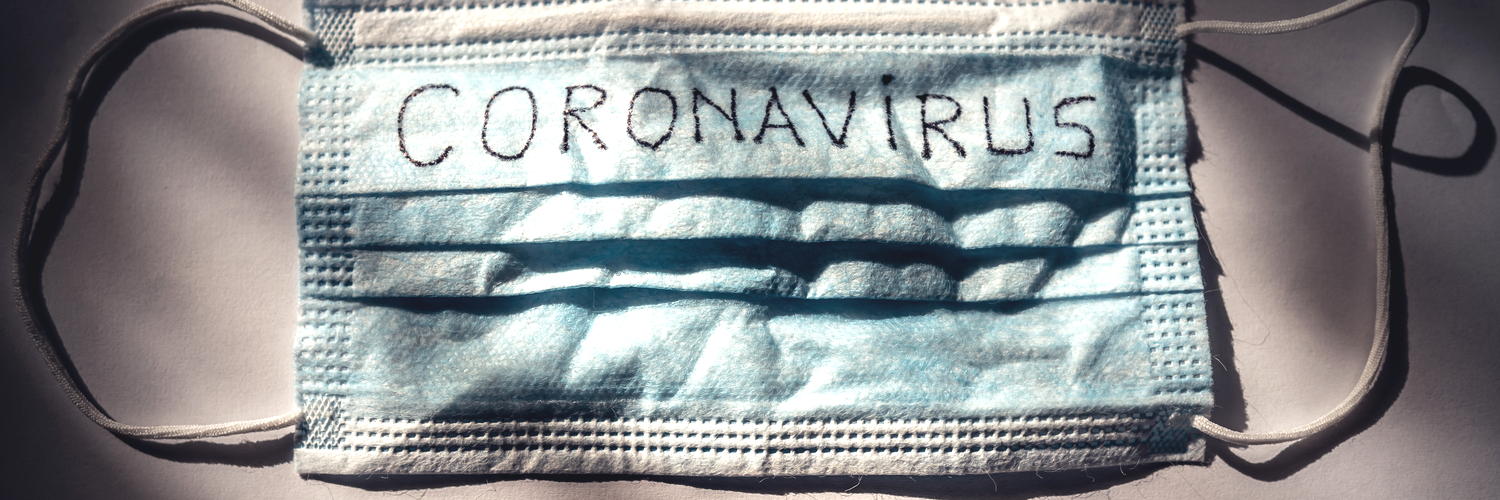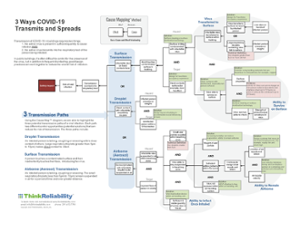Over the past few months, there has been confusion over the ways COVID-19, the novel coronavirus, can be transmitted. As we continue to adjust our daily lives to a new set of guidelines, it’s important to understand these transmission paths in order to mitigate risk of viral infection during the pandemic now and in the future.
In this blog, we use the Cause Mapping® method of root cause analysis to analyze the ways COVID-19 spreads among people. A Cause Map™ diagram is a visual tool for performing a root cause analysis. It intuitively lays out the causes that contributed to an issue and shows the cause-and-effect relationships. Using the Cause Map diagram, we are able to highlight the three potential transmission paths of a viral infection. Each path has different control opportunities (potential solutions) that can reduce the risk of transmission. As a respiratory disease, there are three key transmission vectors that pose a risk to infection.
Droplet Transmission
Respiratory infections are transmitted through respiratory droplets (particle droplets consisting primarily of water but, if infected, also includes viral particles) when we breathe, sneeze or cough. The size of the droplet generally dictates the transmission path. When the droplet particle is greater than 5μm to 10μm, it will typically fall to the ground within a 6-foot radius. If someone is within that 6-foot radius, they are at risk of direct contact with the virus. This would explain our recent familiarity with the term, “social distancing.” The best way to avoid droplet transmission is to avoid close proximity with an infected person. Most experts believe that the most common infection vector is via droplet transmission.
Surface Transmission
The next most likely source of infection is via surface transmission. This route is also commonly referred to as fomite transmission. This route of infection occurs after someone sneezes or coughs and respiratory droplets fall to a surface. The contaminated surface is then touched by someone else who then touches their face (mouth, nose and eyes are the common entry points), which allows the virus to come in contact with your respiratory system. The Cause Map diagram below identifies specific actions within building design that can reduce the risk of surface transmission. In addition to surface cleaning and sterilization technology like UV lighting, another opportunity is to control when a user needs to touch surfaces.
Airborne Transmission
The third transmission path is airborne transmission. This occurs when the small respiratory droplets (less than 5μm to 10μm) remain suspended in air for a period of time and over a greater distance than 6 feet. This route is thought to be the least likely transmission source, although it is the scariest to think about. Keep in mind that infection requires two things, a person must inhale the airborne particle and the virus must be active in sufficient quantity to cause infection. One of the key approaches to mitigating risk within building design is to focus on moving the suspended particles away from the breathing zone. As you’ll see on the Map below, strategic air handling design in buildings may help prevent this method of transmission.
Click on the image below to download the Cause Map diagram. To read the Map, you’ll see the effect is on the left and the cause is on the right. Starting at the left side moving right, you can read the Map from left to right by reading the cause, then saying “because” and then reading the next cause--and on and on as you make your way to the right.
With this information, we gain some insight into how the buildings we work and live in may adapt in the future to reduce the risk of virus transmission. By reviewing the Cause Map diagram solutions, the green boxes above the cause boxes, we see that viable options include creating more touchless occupancy experiences like removing door handles and automating doors, and even using different building materials that are more resistant to viral particles.
Our lives have shifted significantly in recent months, but by digging into the details of the pandemic and how it spreads, we are able to see how things like building design may change in the future to better protect our public health.











